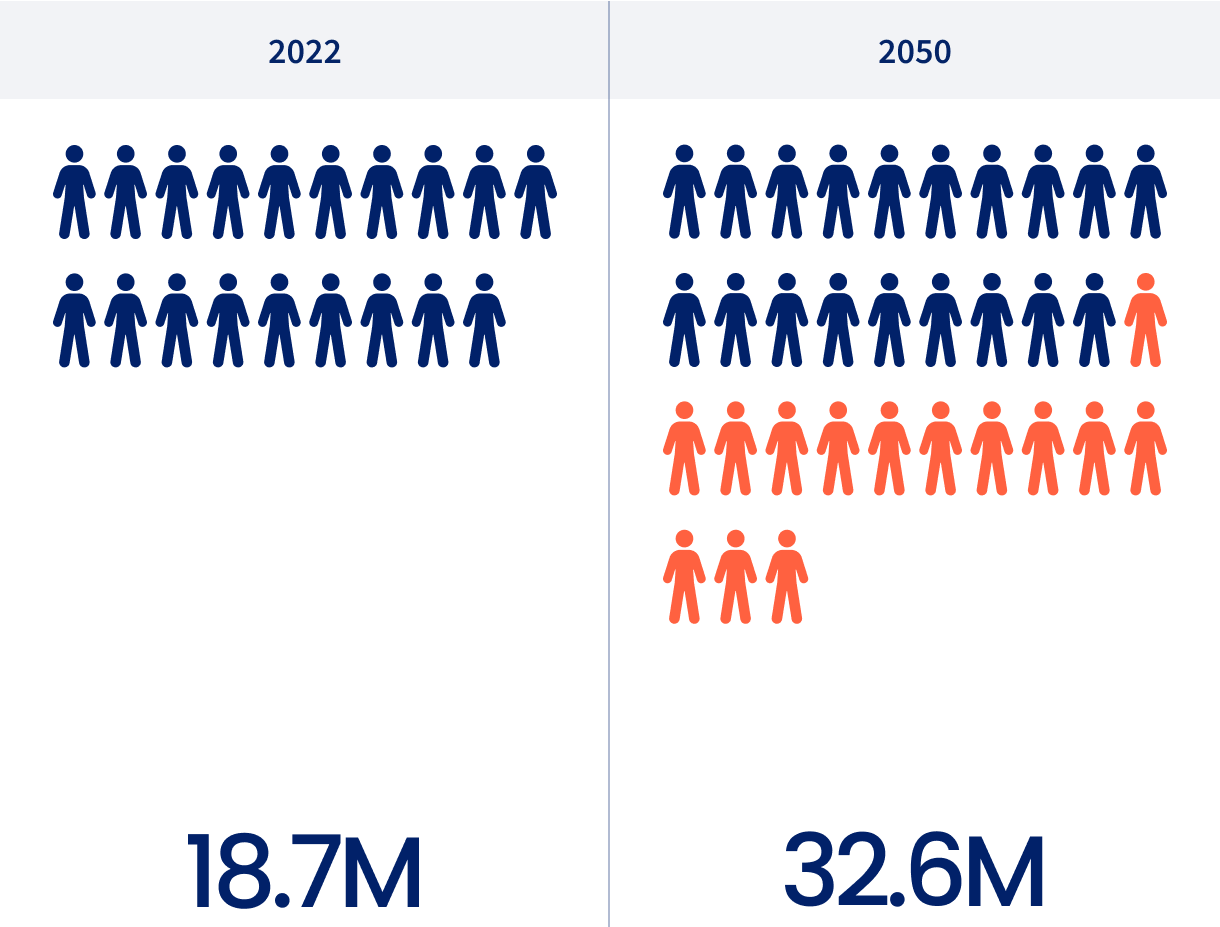The Burden
At present, there are close to 19 million cancer cases and 10 million cancer deaths (excluding non-melanoma skin cancer) worldwide. In the absence of intervention, these numbers are projected to increase to 33 million cancer cases and 18 million cancer deaths by 2050.
For every 10 premature deaths (ages 30-69 years) from noncommunicable disease today, four are due to cardiovascular disease (CVD) and three are due to cancer. As countries undergo societal and economic transition, these two diseases become the leading causes of death in every country (Map 12.1); in most countries, cancer eventually surpasses CVD as the leading cause in this age group, given the relatively greater impact of prevention and treatment in reducing CVD mortality.
Cancer is expected to surpass heart disease as the leading cause of premature death in every country of the world in this century.
Of the 18.7 million new cases and 9.7 million cancer deaths occurring each year, nearly one-half of all cases (52%) and a majority (56%) of cancer deaths are diagnosed in Asia, where close to 60% of the world’s population reside (Figure 12.1). Africa accounts for 6% of the worldwide cases but for almost 8% of the deaths largely due to inadequate early detection and treatment services.
Estimated number of new cancer cases and deaths (excluding non-melanoma skin cancer) worldwide by region, 2022
Lung cancer is currently the most frequently diagnosed cancer worldwide (13% of the total cases), followed by cancers of the female breast (12%), colorectum (10%), prostate (8%), and stomach (5%) (Figure 12.2). It is also the leading cause of cancer death (19% of the total cancer deaths), followed by colorectal (9%), liver (8%), female breast (7%) and stomach (7%) cancers.
Lung cancer represents 1 in 8 cancer cases and 1 in 5 cancer-related deaths worldwide.
Estimated number of new cases and deaths (excluding non-melanoma skin cancer) worldwide by cancer type, 2022
In women, breast cancer is the most common cancer and the leading cause of cancer death, while lung cancer is the most frequent cancer and the leading cause of cancer death among men (Figure 12.3).
Age-standardized incidence and mortality rates (world) per 100,000, by cancer type and sex, 2022
MALES
FEMALES
“An African proverb states, ‘The best time to plant a tree is 20 years ago. The second-best time is today.’ In light of the major cancer burden predicted to affect many [transitioning] countries over the next 20 years, it is imperative that we act today.”
Based on projected population ageing and growth, and assuming incidence and mortality rates remain unchanged, by 2050, the global burden is set to increase to 33 million new cancer cases and 18 million cancer deaths (Figure 12.4).
By 2050, the global cancer burden is expected to rise by 74%, reaching 33 million new cases—up from 19 million—due solely to population growth and aging.
Estimated number of new cancer cases (excluding non-melanoma skin cancer) from 2022 to 2050
